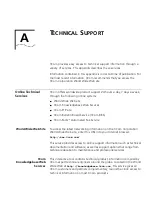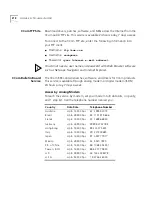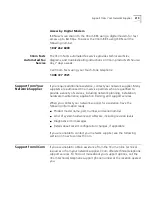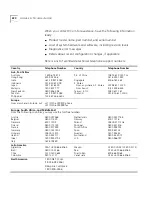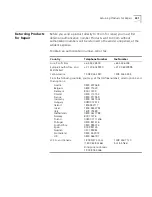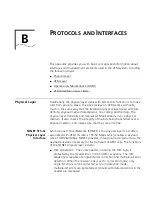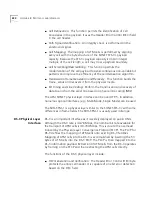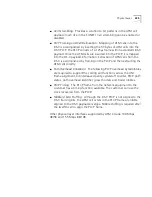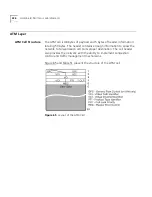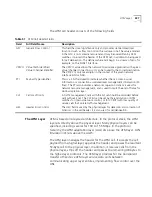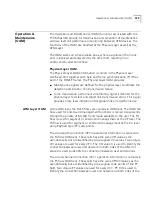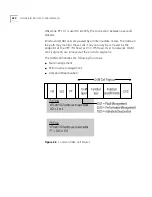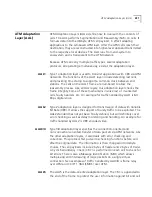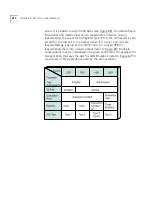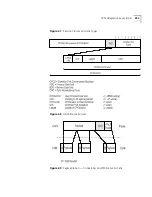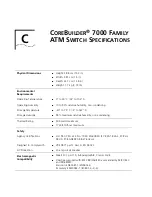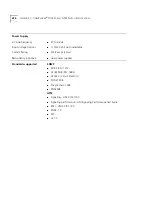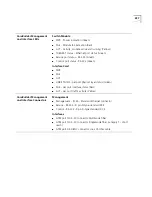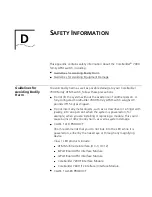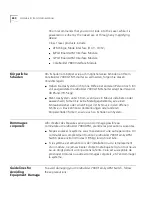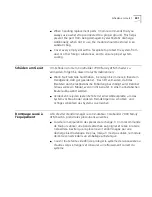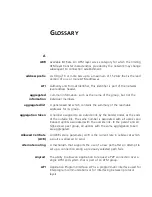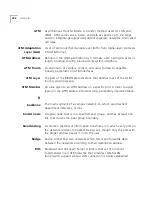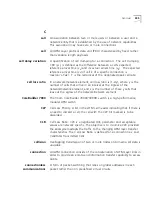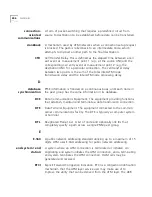
ATM Adaptation Layer (AAL)
231
ATM Adaptation
Layer (AAL)
ATM Adaptation Layers (AALs) define how to deal with the contents of
cells. The AAL performs Segmentation and Reassembly (SAR) on cells. It
formats data into the 48-byte ATM cell payload, in effect adapting
applications to the cell-based ATM layer. After the ATM cells reach their
destination, they are reconstructed into higher-level data and transmitted
to the respective local devices. The AAL runs from end-system to
end-system and is transparent to the ATM network.
Because ATM can carry multiple traffic types, several adaptation
protocols, all operating simultaneously, exist at the adaptation layer.
AAL1
Type 1 adaptation layer is used to transmit applications with CBR via ATM
networks. The functions of the AAL1 layer include detecting lost cells,
and providing time stamp to support a common clock between end
stations. The cells on the AAL1 frame are numbered to allow the
reassembly process. Like all AAL layers, this adaptation layer checks the
frame integrity. Some of these mechanisms involve lost or misinserted
cells, faulty headers, etc. An example for traffic handled by AAL1 is 64
Kbps digital voice.
AAL2
Type 2 adaptation layer is designed for transmission of data with Variable
Bit Rate (VBR). It allows the support of bursty traffic to be exploited. The
AAL2 standard has not yet been finally defined, but will definitely cover
error checking as well as delay monitoring and handling. An example for
traffic handled by AAL2 is VBR encoded video.
AAL3/4
Type 3/4 adaptation layer specifies the connection-oriented and
non-connection-oriented transfer of data packets via ATM networks. Like
the other adaptation layers, it also deals with error checking and
correction. This protocol first puts error-checking functions before and
after the original data. The information is then chopped into 44-byte
chunks. The cell payloads include 2 bytes of header and 2 bytes of trailer.
A Cyclic Redundancy Check (CRC) is performed on each cell to check for
bit errors. There is also a Message Identification (MID) which allows
multiplexing and interleaving of large packets on a single virtual
connection. Two examples of traffic handled by AAL3/4 is frame relay
over ATM and CCITT 1.364 (SMDS) over ATM.
AAL5
The AAL5 is the data-oriented adaptation layer. The CRC is appended to
the end of the frame to protect the user information against bit and cell
Содержание CoreBuilder 7000
Страница 12: ......
Страница 30: ...30 CHAPTER 1 ATM NETWORK BASICS...
Страница 32: ...32 CHAPTER 1 ATM NETWORK BASICS...
Страница 34: ...34 CHAPTER 1 ATM NETWORK BASICS Figure 8 LANE Network over WAN...
Страница 96: ...96 CHAPTER 4 PRIVATE NETWORK TO NETWORK INTERFACE PNNI VERSION 1 0...
Страница 184: ...184 CHAPTER 7 LAN EMULATION VERSIONS 1 0 AND 2 0...
Страница 206: ...206 CHAPTER 9 DEVICE MANAGEMENT...
Страница 222: ...222 APPENDIX A TECHNICAL SUPPORT...
Страница 234: ...234 APPENDIX B PROTOCOLS AND INTERFACES...
Страница 238: ...238 APPENDIX C COREBUILDER 7000 FAMILY ATM SWITCH SPECIFICATIONS...
Страница 242: ...242 APPENDIX D SAFETY INFORMATION...

